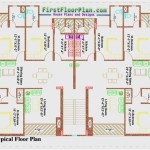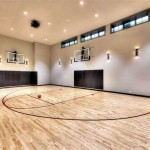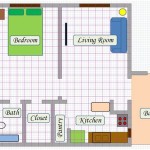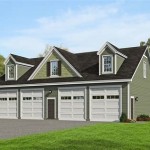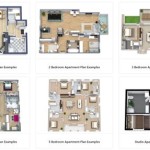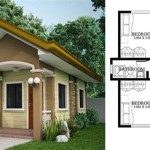House Plan with Mother-in-Law Suite: A Comprehensive Guide
The concept of a "mother-in-law suite," also known as an accessory dwelling unit (ADU), in-law apartment, or granny flat, is increasingly popular in modern house planning. These suites provide independent living spaces within a larger home, offering a comfortable and private environment for aging parents, adult children, or other family members. This article will explore the key aspects of house plans that incorporate mother-in-law suites, including design considerations, regulatory hurdles, and potential benefits.
Understanding the Purpose and Benefits
The primary purpose of a mother-in-law suite is to provide a self-contained living space that promotes independence and privacy. This can be particularly beneficial for families seeking to provide care for aging parents while maintaining their own autonomy. Similarly, it can offer a transitional space for adult children returning home or a long-term living solution for relatives with special needs. Beyond family considerations, a well-designed in-law suite can also serve as a guest suite, home office, or even a source of rental income, depending on local regulations.
The benefits of incorporating an in-law suite into a house plan are multifaceted. For aging parents, it offers the comfort of familiar surroundings and proximity to family while mitigating the isolation that can accompany independent living. For homeowners, it can provide peace of mind knowing that loved ones are nearby and allows for easier assistance with daily tasks or emergencies. Furthermore, adding an ADU can increase the overall property value and potentially generate rental income, contributing to financial stability. This solution is particularly attractive in areas with high housing costs or limited availability of suitable assisted living facilities.
Beyond the practical and financial advantages, a mother-in-law suite can also foster stronger family relationships. By providing separate living spaces, it allows for both independence and connection, reducing potential conflicts and promoting a healthy balance between personal space and family interaction. This arrangement can be especially valuable for families navigating complex caregiving responsibilities or seeking to maintain close bonds across generations.
Key Design Considerations
Designing a house plan with a mother-in-law suite requires careful consideration of several factors to ensure functionality, accessibility, and privacy. The layout, size, and features of the suite should be tailored to the specific needs and preferences of the intended occupants. A well-designed suite will seamlessly integrate with the main house while maintaining a sense of independence and privacy.
One of the first considerations is the location of the suite within the overall house plan. Common options include an attached suite with a separate entrance, a basement conversion, or an above-garage apartment. The chosen location will influence the design and construction costs, as well as the level of privacy and accessibility. An attached suite with a separate entrance is often preferred for its convenience and minimal disruption to the main house, while a basement conversion may be a more cost-effective option depending on the existing structure. An above-garage apartment offers maximum privacy but may require additional structural support and could be less accessible for individuals with mobility limitations.
The layout of the mother-in-law suite should include essential living spaces such as a bedroom, bathroom, living area, and kitchenette. The size of each space will depend on the needs of the occupants, but it is important to ensure that the suite is comfortable and functional. The bathroom should be designed with accessibility in mind, including features such as grab bars, a walk-in shower, and a comfort-height toilet. The kitchenette should include necessary appliances, such as a refrigerator, microwave, and stovetop, to allow for independent meal preparation. The living area should be spacious enough to accommodate furniture and activities, and the bedroom should provide a comfortable and private sleeping space.
Accessibility is a crucial design consideration, particularly for aging parents or individuals with disabilities. Features such as ramps, widened doorways, and lever-style door handles can make the suite more accessible and user-friendly. Attention should also be paid to lighting and acoustics to create a comfortable and safe environment. Non-slip flooring and adequate lighting can help prevent falls, while soundproofing can minimize noise transmission between the suite and the main house. Furthermore, universal design principles should be incorporated throughout the suite to ensure that it is adaptable to changing needs over time.
Privacy is another important factor to consider when designing a mother-in-law suite. A separate entrance is essential to ensure that the occupants can come and go without disturbing the rest of the household. Soundproofing between the suite and the main house can also help to minimize noise transmission and maintain privacy. Strategic placement of windows and landscaping can further enhance privacy by blocking views from neighboring properties or the main house. The use of separate utility meters can also help to maintain independence and avoid potential disputes over energy consumption.
Navigating Regulatory Requirements and Legal Considerations
Before embarking on a house plan with a mother-in-law suite, it is essential to research and understand the local regulatory requirements and legal considerations. Zoning laws, building codes, and homeowner association rules can all impact the feasibility and design of an ADU. Failure to comply with these regulations can result in fines, delays, or even the requirement to remove the suite.
Zoning laws typically dictate the types of structures that are permitted on a property, as well as the size, height, and location of those structures. Many municipalities have specific regulations regarding ADUs, including restrictions on the size, occupancy, and rental potential of the suite. It is important to consult with the local zoning department to determine whether an ADU is permitted on the property and to understand any applicable restrictions. Some jurisdictions may require a special permit or variance, while others may have relaxed regulations to encourage the development of ADUs.
Building codes establish minimum standards for the construction and safety of buildings. These codes address issues such as structural integrity, fire safety, electrical wiring, and plumbing. The construction of a mother-in-law suite must comply with all applicable building codes to ensure that it is safe and habitable. This may require obtaining building permits, submitting construction plans for review, and undergoing inspections throughout the construction process. It is advisable to hire a qualified architect or contractor who is familiar with local building codes to ensure compliance.
Homeowner association (HOA) rules can also impact the feasibility of adding a mother-in-law suite. Some HOAs may have restrictions on the types of structures that are permitted on a property, as well as the number of occupants. It is important to review the HOA's governing documents to determine whether an ADU is allowed and to understand any applicable restrictions. Obtaining approval from the HOA may be required before beginning construction.
Legal considerations beyond zoning and building codes may also apply. For example, if the suite is intended to be rented out, it is important to comply with all applicable landlord-tenant laws, including requirements for leases, security deposits, and eviction procedures. Furthermore, it is advisable to consult with an attorney to ensure that the creation of the ADU does not violate any existing covenants or easements on the property.
Financing the construction of a mother-in-law suite can also present unique challenges. Traditional mortgage lenders may be hesitant to finance the construction of an ADU, particularly if it is intended to be rented out. Alternative financing options, such as home equity loans, personal loans, or construction loans, may be necessary. It is important to research different financing options and to understand the terms and conditions of each loan before making a decision.
Finally, it is important to consider the long-term implications of adding a mother-in-law suite. This includes considerations such as property taxes, insurance coverage, and estate planning. The addition of an ADU may increase the property's assessed value and result in higher property taxes. It is also important to review the property's insurance policy to ensure that it provides adequate coverage for the added structure. Furthermore, it is advisable to update the estate plan to address the ownership and disposition of the ADU in the event of death or incapacity.

In Law Suite Plans Give Mom Space And Keep Yours The House Designers

Homes With Mother In Law Suites

Portfolio Legacy Mother In Law Suite Opal Design Group

Detached Mother In Law Suite House Plans

House Plan 76572 Ranch Style With 1948 Sq Ft 2 Bed Bath 1

House Plan 52030 Farmhouse Style With 3088 Sq Ft 4 Bed 3 Bath

Inlaw Suite House Plans With Detached Mother In Law Fresh New On Main Floor

Adding An In Law Suite To Your Home Designing Perfect House

Exclusive Brick Clad House Plan With Mother In Law Suite 510210wdy Architectural Designs Plans

French Country In Law Suite House Plan Home 153 1491



